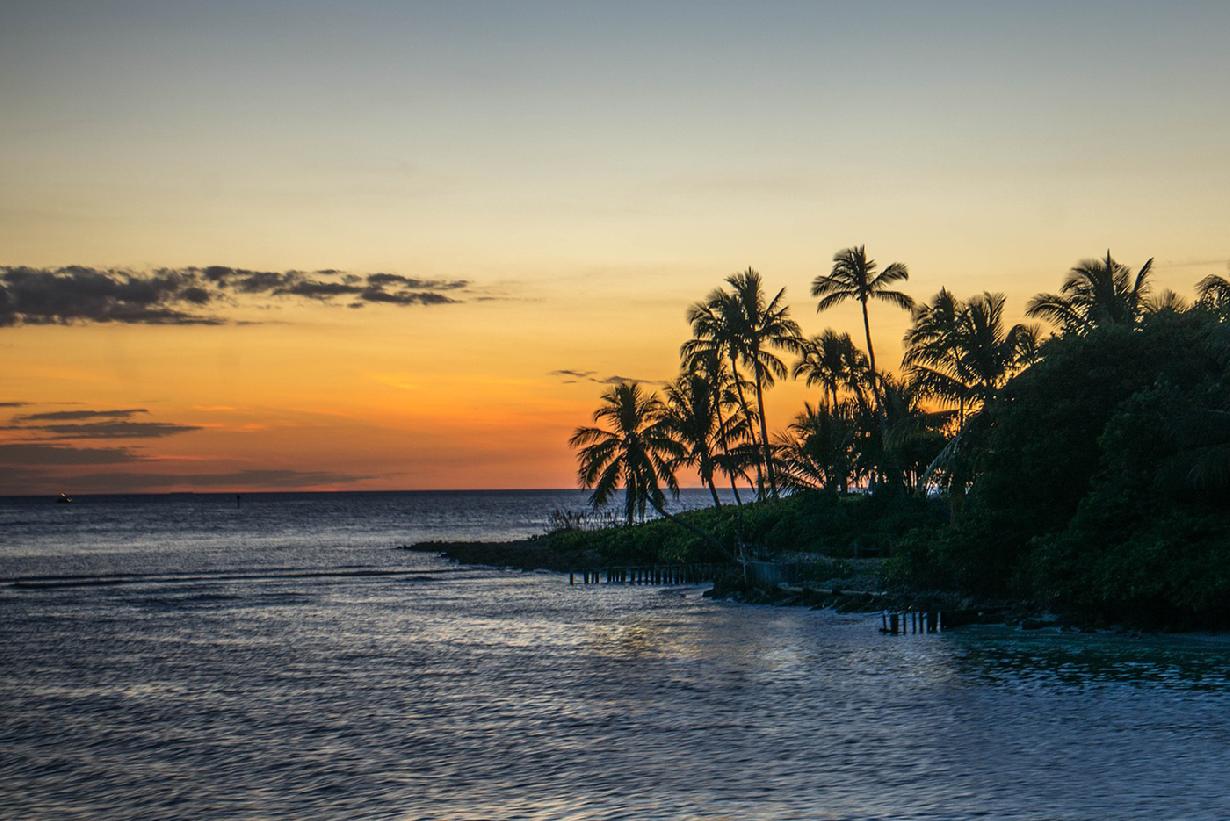
Channels snake between islands, occasionally branching into smaller, narrower channels to form confusing labyrinths. Many of the channels lead to wide bays, where bottle-nosed dolphins suddenly sprout, linger near the surface, and then disappear. Ospreys scream from their massive nests wedged in the crowns of large black or red mangroves.
Other smaller, canopied channels, bathed in a green glow from light filtered through the interlacing tangle of mangrove branches overhead, lead to quiet backwater lakes. On calm days, the silence is almost absolute, broken only by an occasional croak from a night heron roosting in the mangroves or the crashing of a snook chasing finger mullet through shallows among the mangrove roots.
The Edison Ford Winter Estates sit on 20-acres and has historical buildings, gardens, the Edison Botanic Research Lab, the Edison Ford Museum, the Edison Main House, Guest House, Caretaker’s House, and the Ford House. The museum also has many of Edison’s inventions, artifacts, and special exhibits.
Established in 1878, the Sanibel Island Lighthouse was created due to the increasing level of trade and boats that were sailing along the Southwest Florida coast. The lighthouse is still operating today and is open for tours.
The J. N. “Ding” Darling National Wildlife Refuge is located on the subtropical barrier island of Sanibel in the Gulf of Mexico. The refuge is part of the largest undeveloped mangrove ecosystem in the United States. It is world famous for its spectacular migratory bird populations.
“The Everglades National Park is the largest subtropical wilderness within the U.S. The Park is close to 1.5 million acres in size and is habitats for many species. Of these species, many of these are considered either rare or endangered, including the manatee, American crocodile, and the Florida panther”.
“The Golisano Children’s Museum of Naples is a two-story, 30,000 square foot cultural institution including ten permanent and temporary exhibit galleries. The exhibits blend state-of-the-art technology with a replication of the natural world and human communities”. There is also a family resource library, classrooms, a birthday party room, meeting rooms, a garden café, and a Museum Store. All facilities are designed to be fully accessible.
“Sun-N-Fun Lagoon has over one million gallons of water, four pools, a lazy river, a splash playground, five water slides, a concession stand, and several other amenities”.
The Everglades Wonder Gardens in Bonita Springs has been in place since 1936. Originally created for the rehabilitation of injured animals, the attraction has become a focal point of the area, and remains as one of the last survivors of Florida’s Golden Age of Roadside attractions.
The Boston Red Sox Spring Training takes place at Fenway South every spring. Fenway South has many amenities for teams including state-of-the-art training facilities, JetBlue Park (the main ballpark), six practice fields, a rehabilitation center, and other adjoining facilities for both Major and Minor league operations.
Since 1991, the Minnesota Twins have done their spring training in Lee County and play at Hammond Stadium. The stadium is part of the 80-acre Lee County Sports Complex, which icludes five full and two half baseball fields, two soccer fields, a softabll complex and an eight acre lake for public fishing. The Fort Myers Miracle, a Minnesota affiliate calls Hammond Stadiumhome once the Twins complete spring training.
The Tampa Bay Rays have their spring training at the Charlotte Sports Park which was opened in 1987, remodeled in 2009, and now seats close to 7,000 fans.
The Ah-Tah-Thi-Ki Museum is home to over 30,000 artifacts and is located on the Big Cypress Seminole Indian Reservation.
“The Southwest Florida Museum of History is dedicated to the collection, preservation, and interpretation of history and traditions, with particular emphasis on Fort Myers and Southwest Florida. Housed in the former Atlantic Coastline Railroad depot, the Museum is home to the history of Southwest Florida”.
“Learning is fun for the whole family at the Imaginarium Science Center”. The Imaginarium features a hurricane simulator, an area for touching sea life, a theater for educational films and numerous other activities involving all five senses. Families, groups and schools are welcome.
“Naples Botanical Garden is creating a world class paradise that combines delightful cultivated tropical gardens with beautifully restored natural habitats. The Garden connects people and plants through different displays, educational resources, and science”.
Located at the northern end of the Ten Thousand Islands on the gulf coast of Florida, the Rookery Bay National Estuarine Research Reserve represents an amazing world within the 110,000 acres of pristine mangrove forest, uplands and protected waters of Rookery Bay. A myriad of wildlife, including 150 species of birds and many threatened and endangered animals, thrive in the estuarine environment and surrounding upland hammocks and scrub found within the Reserve.
“A community landmark since 1888, the beach and pier extends 1,000 feet into the Gulf of Mexico. Naples Pier and beach is a hub for activities and gatherings to watch sunsets. Fishing is allowed from the Pier 24 hours a day”.
“Combining conservation and recreation, Naples Zoo offers fun for every generation. It is home to lions, giraffes, tigers, alligators, and reptiles. There are also a number of ways to get involved with helping animals. The zoo is accredited by the prestigious Association of Zoos and Aquariums, and is an institutional member of the American Association of Zoo Keepers”.
Collier County Museums exhibit prehistoric animals including mastodons and saber cats. There are opportunities to learn about the Calusa and Seminole Indians, frontier families, and trailblazers. The Naples Museum has both permanent and changing exhibit galleries, two historical homes, Seminole Chickees, a recreated log fort, and many other features.
The Clewiston Museum offers eco-tours of the Big Cypress swamp, birding, and historic Seminole Indian exhibits.